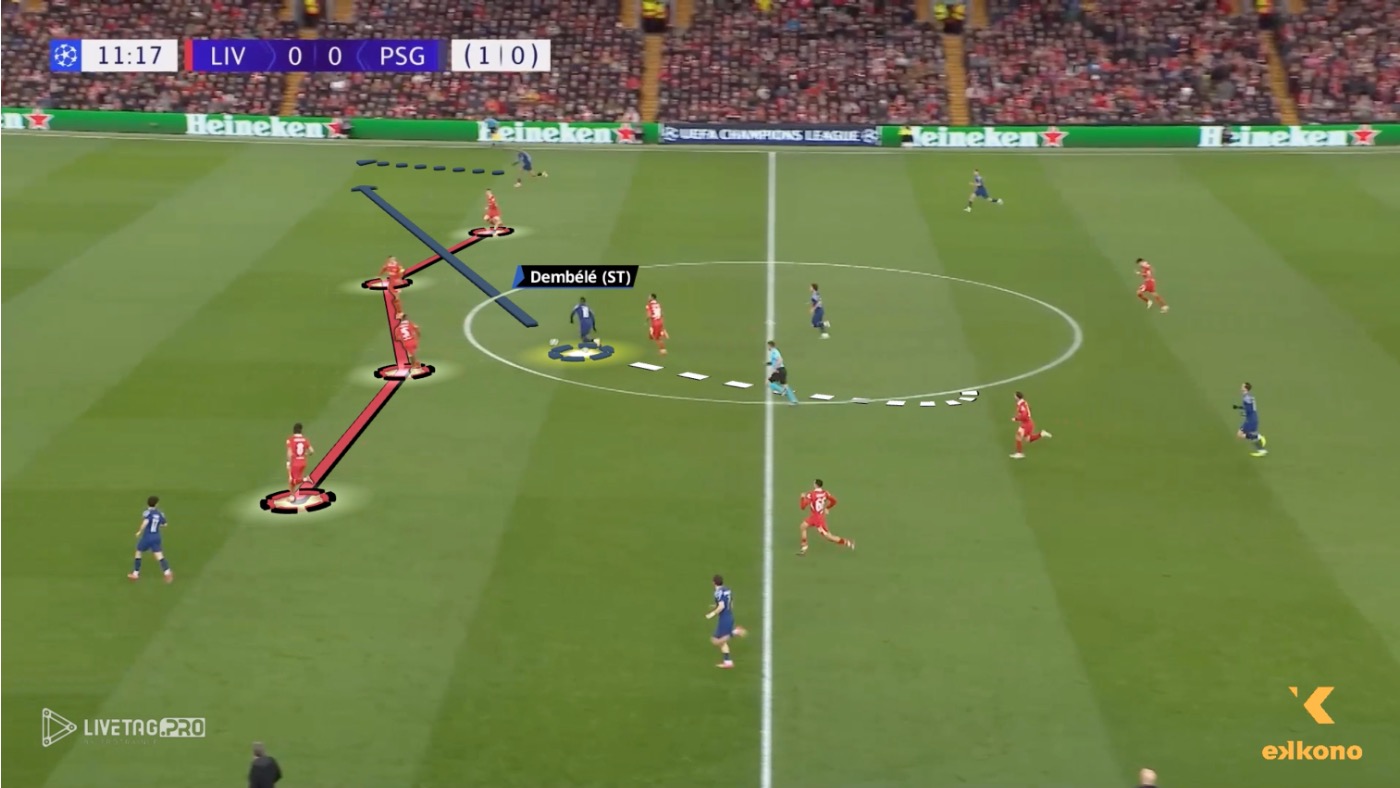
Luis Enrique’s Vision for PSG
In this article, we’ll analyze one of the top teams in world football: Paris Saint-Germain under Luis Enrique. Despite the departure of their star player, Kylian Mbappé, the Spanish coach has brought stability to the Parisian side through an attractive playing style that prioritizes the collective over individual brilliance. Let’s dive into the key tactical aspects that define PSG’s attacking game under his leadership.
Paris: From 4-3-3 to 3-4-3 Under Luis Enrique
We would like to start by highlighting the formation that Paris Saint-Germain is currently uses and how they adapt it. PSG shifts between two main shapes depending on the zone of the field. In the build-up phase, they typically operate in a 4-3-3, with Dembélé, their current striker, frequently dropping deeper to create numerical superiority in midfield.
Their approach varies based on the opponent’s pressing strategy. If facing man-oriented pressure, they often opt for a more direct build-up.
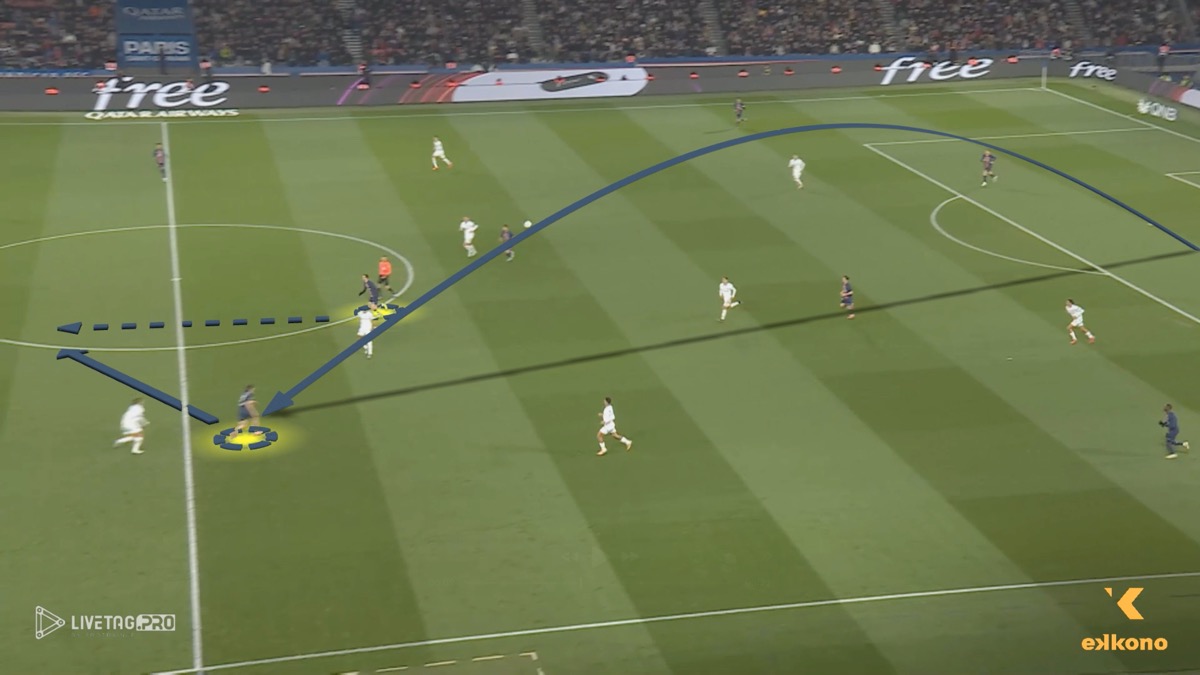
Luis Enrique’s PSG. Direct play agaisnt individual marking
In this action, we see PSG building up against individual pressing. They avoid risks and play long where there is a 4v4 situation.
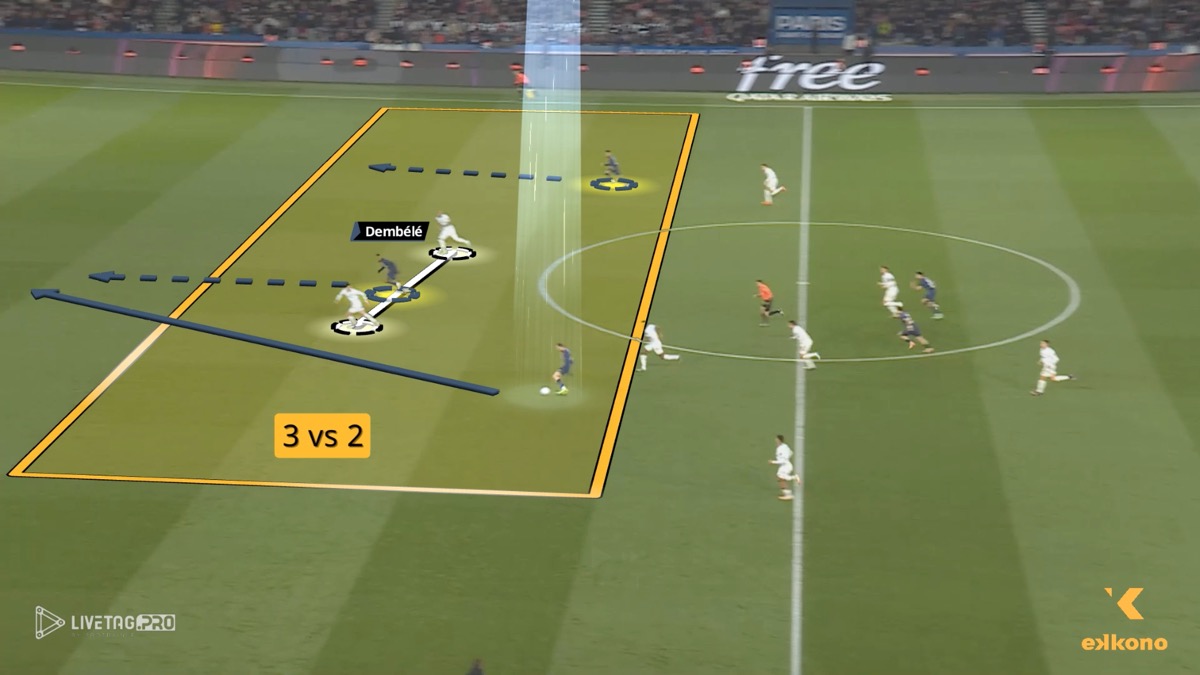
Luis Enrique’s PSG. Direct play agaisnt individual marking
With their movements, they obtain a 3v2 attack in the final third that ends with Dembélé scoring.
Against a zonal press, they look to combine and find the free player to progress up the pitch. Once they move the ball further up, PSG reorganizes into a 3-4-3 structure. This allows them to overload central areas and target spaces behind the opposition’s backline, especially against a mid-block. Against a low block, it enhances their ability to flood the box with attacking players. Importantly, the team keeps three fixed defenders at the back to maintain defensive security during transitions.
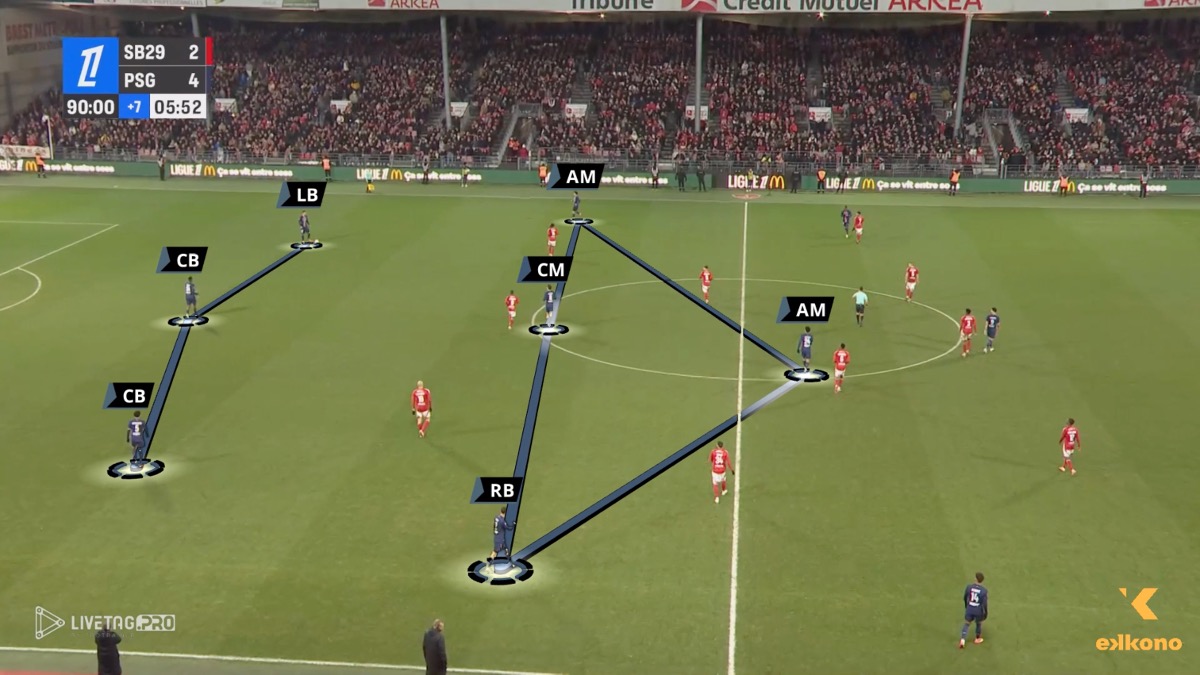
Luis Enrique’s PSG. 3-4-3 formation in zone 2
In this example, we can see how PSG attacks in a 3-4-3 formation against a mid-block defense.
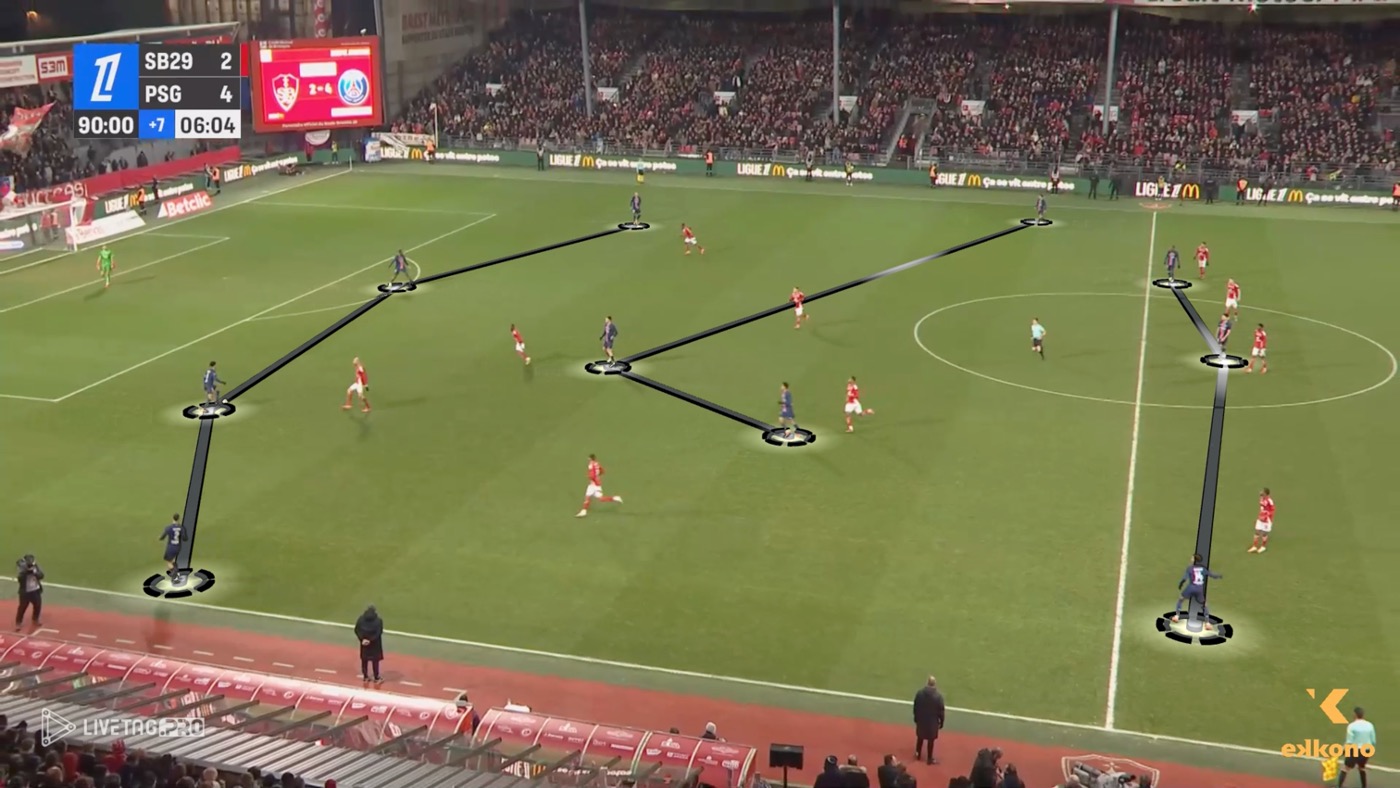
Luis Enrique’s PSG. 4-3-3 formation in zone 1
As the opponent applies a high press, Achraf Hakimi (RB) drops deeper, shifting PSG’s shape into a 4-3-3 for better buildup.
Rational Occupation of the Inner Spaces
In this 3-4-3 shape, player positioning is highly rational. PSG’s attacking play isn’t strictly positional; rather, players constantly move, dynamically creating and exploiting spaces.
A crucial element is how the team rebalances its structure whenever a player vacates their initial position. Those further away adapt their positions to maintain width, depth, and vertical layering within the formation.
The double holding midfielder stays in central areas, though there are rotations between players. At least two players occupy the half-spaces (pockets) at all times, with a third often joining when Dembélé drops deep, highlighting his importance in Luis Enrique’s system.
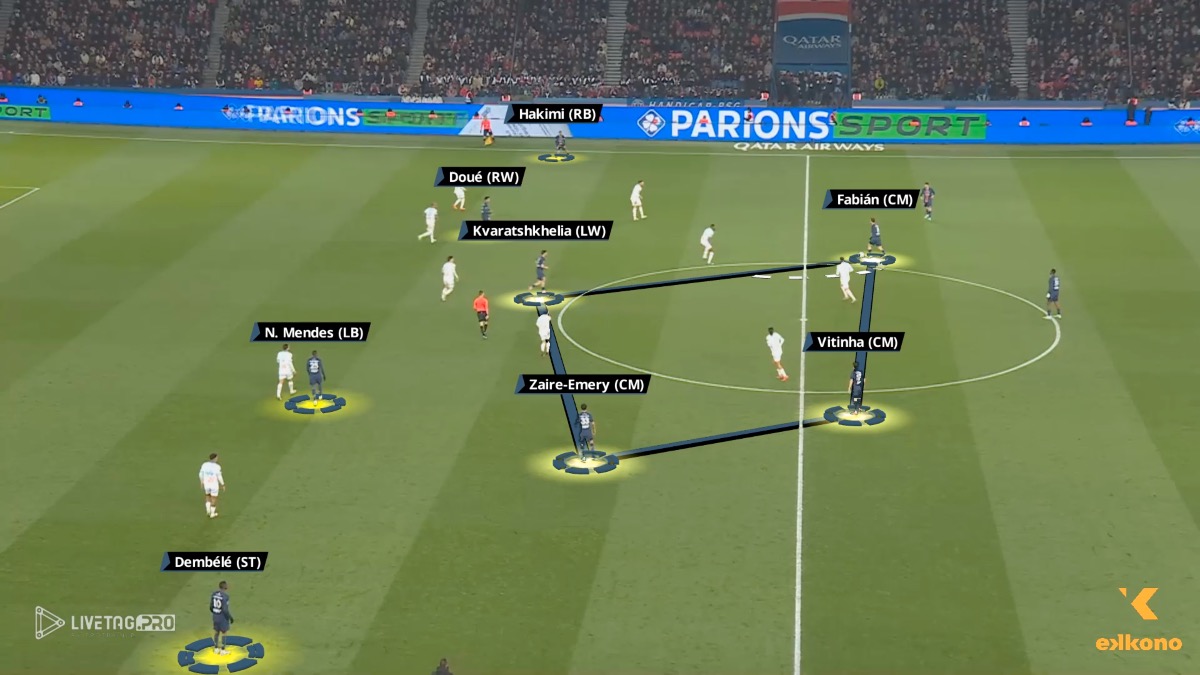
Luis Enrique’s PSG. Rational Occupation of the Inner Spaces
In this play, we see how four players are occupying inner spaces, constantly rotating their positions to create and occupy new spaces.

Luis Enrique’s PSG. Rational Occupation of the Inner Spaces.
PSG overloads the right flank, attracting Marseille’s players, and Fabián (CM) attacks the space from a deep position.
Dembélé’s New Role at PSG: Tactical Freedom and Offensive Impact
Building on this, Dembélé’s role under Luis Enrique deserves special attention. The French winger has experienced a remarkable transformation, emerging as a key figure in PSG’s tactical setup and delivering standout performances in recent months.
He plays as a striker in both the 4-3-3 and 3-4-3 systems, but enjoys complete freedom of movement acting as a false 9 or even a winger. Dembélé often drops into the pockets or drifts wide, taking on roles similar to a wing-back or winger. This creates unpredictability for defenders and opens up space for second-line runners who look to attack the back of the defensive line.
His ability to both create and exploit space is crucial in a system that demands high tactical intelligence and adaptability. Moreover, under Luis Enrique, Dembélé has not only improved his influence in build-up play but also significantly increased his goal contributions—providing both goals and assists with greater consistency.
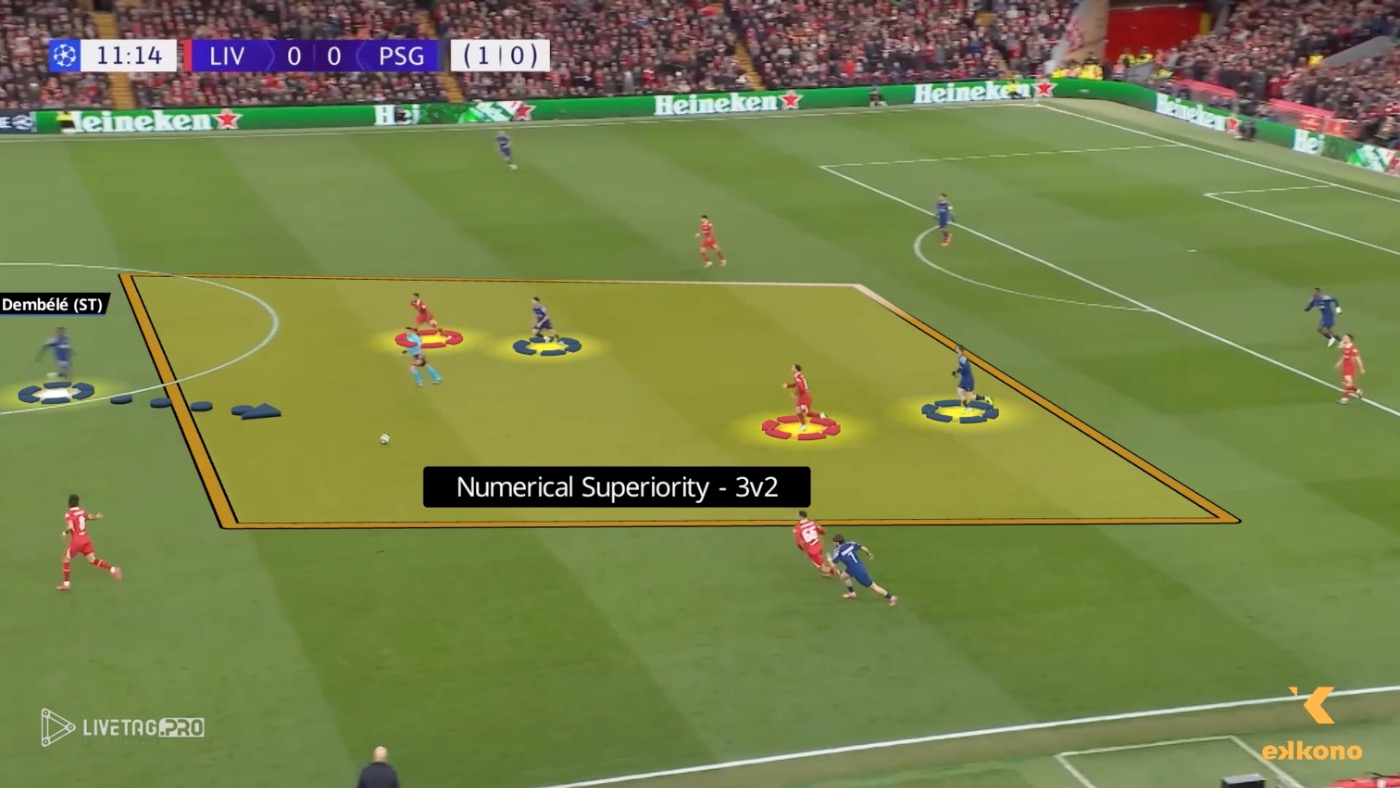
Luis Enrique’s PSG. Dembélé false 9
In this action, we see Ousmane Dembélé playing as a false 9, dropping back to receive the ball and creating numerical superiority.
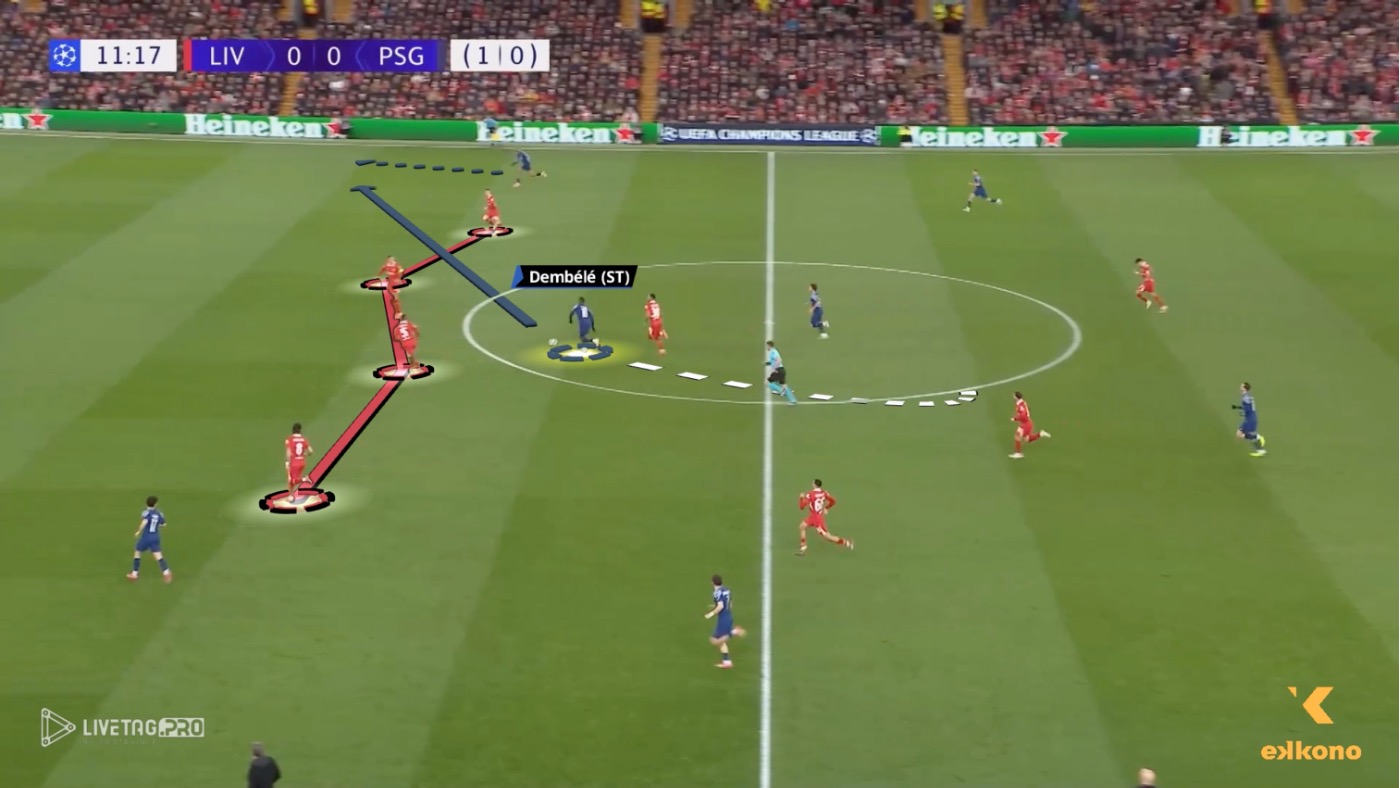
Luis Enrique’s PSG. Dembélé false 9
After that, he gives a great pass to his teammate between the defenders and then attacks the box to end up scoring against Liverpool.
Luis Enrique’s Tactical Identity at PSG
Without a doubt, after Kylian Mbappé’s departure, Luis Enrique has molded PSG into a highly offensive unit, with clearly defined tactical variations. His work in Paris has been commendable, successfully implementing his philosophy and building a team where the collective takes center stage. The results and quality of play so far speak volumes of his success.
Remember you can watch the full analysis in video inside our virtual campus. Not a member? Check our membership plans and sign up now.

